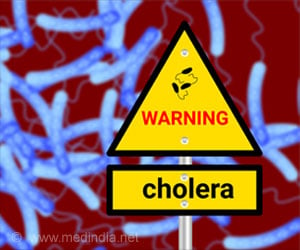
Prof. Douglas E. Brash and his co-authors exposed mouse and human melanocyte cells to radiation from a UV lamp, which caused a type of DNA damage known as a cyclobutane dimer (CPD), in which two DNA "letters" attach and bend the DNA, preventing the information it contains from being read correctly. To the researchers' surprise, the melanocytes not only generated CPDs immediately but continued to do so hours after UV exposure ended. Cells without melanin generated CPDs only during the UV exposure his finding showed that melanin had both carcinogenic and protective effects.
The researchers next tested the extent of damage that occurred after sun exposure by preventing normal DNA repair in mouse samples. They found that half of the CPDs in melanocytes were "dark CPDs" -- CPDs created in the dark.
Sanjay Premi, associate research scientist in the Brash laboratory, discovered that the UV light activated two enzymes that combined to "excite" an electron in melanin. The energy generated from this process -- known as chemiexcitation -- was transferred to DNA in the dark, creating the same DNA damage that sunlight caused in daytime. Hemiexcitation has previously been seen only in lower plants and animals.
But the researchers also pointed to a ray of hope: The slowness of chemiexcitation may allow time for new preventive tools, such as an "evening-after" sunscreen designed to block the energy transfer.
The study is published online in the journal Science.
Advertisement














